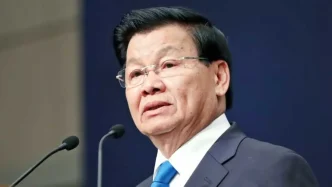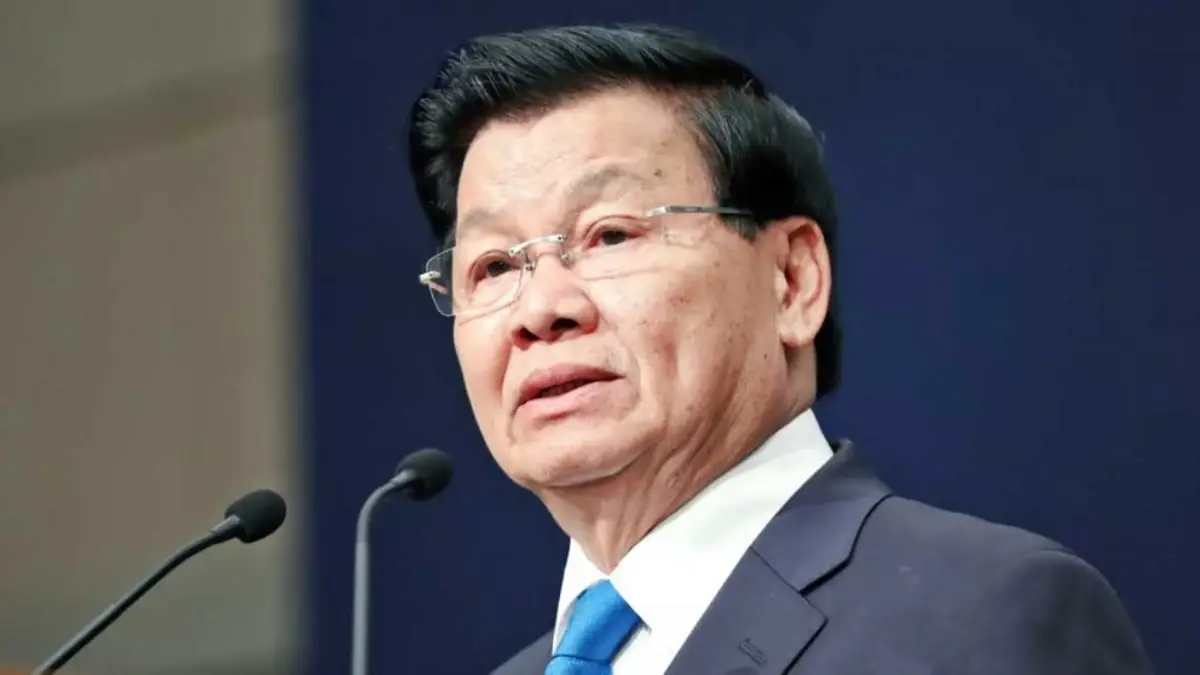In a significant step toward fostering regional collaboration, Lao President Thongloun Sisoulith recently hosted a gathering of young leaders from Laos, Vietnam, and Cambodia in Vientiane. The event, aimed at nurturing the next generation of change-makers in the region, underscored the importance of unity and shared vision among the neighboring nations. As South East Asia faces complex political and economic challenges, such initiatives highlight the role of youth in shaping a collective future.
A Vision for Regional Unity
The meeting, held in the Lao capital, brought together a diverse group of young individuals eager to contribute to their countries’ development. President Thongloun Sisoulith, a veteran leader of the Lao People’s Revolutionary Party, emphasized the critical role of youth in addressing regional issues, from economic disparities to environmental concerns. According to reports from local sources, the president encouraged the participants to embrace innovation and collaboration as tools for progress.
The event served as a platform for dialogue on shared challenges, including sustainable development and cultural preservation. Laos, Vietnam, and Cambodia, bound by history and geography, have long maintained close ties, often navigating similar socio-political landscapes. This gathering reinforced the commitment to strengthen these bonds through the energy and ideas of younger generations.
Empowering the Next Generation
Young leaders from the three nations shared their aspirations and concerns during the interactive session. While specific quotes from participants were not available in verified reports, the overarching theme was one of optimism and determination. Local accounts suggest that discussions centered on how youth can drive initiatives in education, technology, and community development—key pillars for long-term growth in the region.
President Sisoulith reportedly urged the attendees to take ownership of their future, highlighting the importance of cross-border cooperation. This message resonates deeply in a region where historical conflicts and economic competition have at times strained relations. By fostering such exchanges, Laos positions itself as a mediator and advocate for regional harmony, a role it has played with increasing prominence in recent years.
Historical Context of Trilateral Relations
The relationship between Laos, Vietnam, and Cambodia is rooted in a shared history of struggle and resilience. During the 20th century, the three nations faced colonial rule, war, and internal strife, often finding strength in mutual support. Vietnam, in particular, played a significant role in Laos and Cambodia during the Indochina Wars, forging alliances that persist in modern political frameworks.
Today, these ties manifest in joint efforts through organizations like the Association of Southeast Asian Nations (ASEAN) and bilateral agreements on trade and security. However, challenges remain, including border disputes and differing political systems. Events like the recent meeting in Vientiane serve as reminders of the potential for dialogue to bridge gaps, especially when driven by the passion of younger generations.
The Role of Youth in Political Landscapes
Across South East Asia, youth engagement in politics and governance is gaining momentum. In Laos, where the political structure is dominated by the Lao People’s Revolutionary Party, opportunities for young voices to influence policy are limited but growing. Similar dynamics exist in Vietnam, under the leadership of the Communist Party of Vietnam (CPV), and in Cambodia, where the Cambodian People’s Party holds significant sway. Yet, the digital age has empowered young people to organize, advocate, and demand accountability in unprecedented ways.
The Vientiane gathering is a testament to the recognition of this shift. By directly engaging with youth, leaders like President Sisoulith signal an openness to new perspectives, even within tightly controlled political environments. This approach could pave the way for gradual reforms, particularly in areas like education and economic opportunity, where young people are most affected.
Challenges and Opportunities Ahead
While the event was a symbolic success, translating inspiration into action remains a challenge. Economic inequality, access to quality education, and environmental degradation are pressing issues that require more than dialogue—they demand resources, policy changes, and sustained commitment. For young leaders in Laos, Vietnam, and Cambodia, the path forward involves navigating bureaucratic hurdles and, in some cases, political sensitivities.
Moreover, the diversity of experiences within the region adds complexity. Rural youth in Laos may prioritize agricultural innovation, while urban youth in Vietnam focus on tech entrepreneurship. Bridging these differences to create cohesive regional strategies will be a test of the participants’ resolve and creativity. Nevertheless, the shared commitment to progress offers a strong foundation.
Laos as a Regional Connector
Laos, often overshadowed by its larger neighbors, has increasingly positioned itself as a hub for regional dialogue. Its strategic location, bordering both Vietnam and Cambodia, makes it a natural meeting point for trilateral initiatives. Under President Sisoulith’s leadership, the country has sought to leverage this position to foster cooperation, particularly on issues like the Mekong River’s management, which affects millions across the three nations.
The recent meeting with young leaders aligns with this broader strategy. By investing in youth, Laos not only strengthens its domestic future but also builds goodwill with its neighbors. This soft diplomacy could yield long-term benefits, enhancing trust and collaboration in a region often marked by competition.
Broader Implications for ASEAN
The engagement of young leaders in Vientiane also carries implications for the broader ASEAN framework. As the bloc works toward greater integration, the inclusion of youth perspectives is vital. Issues like climate change, digital transformation, and labor migration transcend national borders, requiring innovative solutions that younger generations are often best equipped to provide.
Events like this one could serve as a model for other ASEAN member states, encouraging similar initiatives. If successful, they might contribute to a more inclusive regional identity, one that values the contributions of all citizens, regardless of age or background. For now, the focus remains on sustaining the momentum generated in Vientiane.
Looking to the Future
As the young leaders from Laos, Vietnam, and Cambodia return to their communities, the impact of their time with President Thongloun Sisoulith will unfold over time. The ideas exchanged and connections formed in Vientiane hold the potential to spark grassroots movements or influence policy at higher levels. What remains clear is the shared desire for a stronger, more united region.
For Laos, hosting such an event reinforces its commitment to regional leadership, even as it grapples with internal challenges like economic development and infrastructure. Whether this gathering marks the beginning of a broader youth-led transformation in South East Asia is a question only time will answer. For now, the seeds of collaboration have been planted, and their growth depends on continued nurturing from leaders and citizens alike.















